In ever-changing ways through thousands of years, Qigong has been a fundamentally important part of the art and science of Acupuncture. Those who have developed and practiced this medicine over millennia agree that a practitioner’s level of self-cultivation forms a foundation for effective healing. Qigong can be translated simply as “energy work”, or more specifically, “the skill of working with Qi, gained through dedicated practice and effort”. Acupuncture is inseparably connected to directing Qi; so it is essential that we learn to work with this functional life-force energy.

Traditionally, studying acupuncture was deeply connected to the training of body, breath and intention through both internal and external Qigong practices. It is not simply needles placed in predetermined locations which treat a patient, but also the state of a practitioner’s Spirit which helps create conditions for the body to heal itself. Until quite recently, Chinese Medicine was passed down through intimate student-teacher relationships based on lineage, apprenticeship and direct transmission of practices. This included myriad modalities for cultivating and engaging with Qi. There are literally thousands of different types of Qigong, evolved over the centuries for a variety of purposes. Some are well-known; others kept as closely guarded secrets within family lineages, mountain monasteries and hermits’ caves.
With the Chinese Communist Revolution came consolidation of many of these medical practices into the standard system we know today as TCM. Qigong was also standardized into a few “acceptable” forms and even entirely forbidden at times. Through this process of assimilation much knowledge was discarded and dismissed as superstitious in an attempt to bring a more “rational” and empirical approach to this ancient wisdom. While many methods which were banned might well have been esoteric quackery, an unfortunate consequence of this purging was a loss of much of the Spirit at the heart of the medicine.
Like much of modern life in this fast-paced information age, the present state of acupuncture is at a fascinatingly contrasted and paradoxical place. Never before has this medicine been so widely recognized and accessible on a global scale. Unprecedented numbers of people are learning, practicing and receiving acupuncture and associated modalities. The refined wisdom of many continuous centuries is neatly packaged and available in standardized school curricula, books and workshops. Yet for all the incredible breadth and accessibility of this information, sometimes something important somehow feels missing from the picture…
Not all acupuncture works the same, and much of its efficacy is related to the skill and Spirit of the practitioner. In the modern-day TCM education system, exposure to effective systems of self-cultivation practice is likely much less than in the lineages and traditions of pre-communist China. Depending on the specific curriculum and teachers at various Chinese Medicine schools, students of acupuncture may learn drastically different skills and perspectives. Standard TCM school requirements for learning Qigong may often be minimal (or even nonexistent), bland or impractical for the actual practice of acupuncture.
There are several important reasons we need a strong, practical and embodied Qi cultivation practice. As healers working directly with energies of trauma and illness it is vital that we build our reservoir of Qi before treatment, protect ourselves from invasive energies while working and clear any residual stagnation afterward. Qigong can also help us gain an intimate understanding of and relationship with the Jingluo (Network of Channels\Meridians) through the direct experience of our bodies. We can explore these lines of functional energy and movement in an experiential way, going beyond the information gained from books and charts to the embodied wisdom of feeling. This developed and refined internal knowledge can be directly applied to our healing practice as well as our entire lives.
White Tiger Qigong is a powerful, broad-range and effective series of exercises based on ancient Taoist practices and cutting-edge science. The movements have been cross-referenced by modern day anatomists to ensure that they can be safely performed by people of different body types and abilities. The subtle details and explanations of the meridians, organs and energetic states accessed through practice are clearly laid out. This relevant and accessible approach helps demystify the meridians through modern understanding of fascia science and how this overlaps precisely with ancient knowledge of the channels. The movements work on opening the body, aligning the structure, wringing out meridians and detoxifying organs, which leads to direct and tangible results. There are also deep and potent inner-alchemy practices for cultivating the Shen (Spirit) and accessing alternate states of awareness. White Tiger is a powerful collection of Medical Qigong practices brought together into a well-rounded system of healing, transformation and developing our highest human potential.

Traditionally, studying acupuncture was deeply connected to the training of body, breath and intention through both internal and external Qigong practices. It is not simply needles placed in predetermined locations which treat a patient, but also the state of a practitioner’s Spirit which helps create conditions for the body to heal itself. Until quite recently, Chinese Medicine was passed down through intimate student-teacher relationships based on lineage, apprenticeship and direct transmission of practices. This included myriad modalities for cultivating and engaging with Qi. There are literally thousands of different types of Qigong, evolved over the centuries for a variety of purposes. Some are well-known; others kept as closely guarded secrets within family lineages, mountain monasteries and hermits’ caves.
This is an open invitation to continuously explore the Way of the Tao as it manifests through our body, Spirit and the vast Universe. We have much to learn from this ancient and ever-unfolding Path of Wisdom. May our own journeys of exploration and growth be of service and benefit to all those who are seeking greater health, balance and wellbeing.
This article was written by certified White Tiger Qigong Instructor and Acupuncturist Sean T. Fox.
Explore the rest of White Tiger Qigong’s blog for more expert advice and insights on the ancient art.






